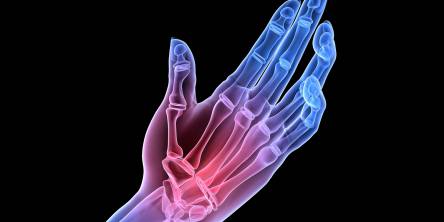9 Meds for Asthma and Allergies

If you have asthma, there's a considerable likelihood that an underlying allergy—to cat dander, pollen, dust mites, cockroaches, or other things— contributes significantly to your breathing difficulties.
Avoiding the allergen is the first line of defense in allergic asthma, but it's not always possible or effective in halting symptoms like coughing, wheezing, and shortness of breath.
The use of medicine is then needed. Here are some typical asthma medications so you may choose the one that works best for you.`
1. Inhaled Corticosteroids
One of the most crucial treatments for any type of asthma, including allergic asthma, is inhaled corticosteroids.
They virtually stop the inflammatory response in the lungs, making them the gold standard. These so-called "controller" medications take a few days to start working, so they aren't intended for temporary symptom relief.
2. Leukotriene Receptor Antagonists
These treatments, including Singulair (montelukast sodium), also referred to as "controller" medications, can treat allergic asthma because they prevent an inflammatory molecule from being generated by the immune system. They can also manage non-allergic asthma, though.
The fact that they are pills and have few adverse effects is a pro. The result is typically modest, which is a disadvantage. They occasionally function quite effectively if you have mild asthma, either mild intermittent or mild chronic.
3. Short-acting Beta Agonists
You may be familiar with these inhalers because they're always carried around by asthmatic characters in movies. These treatments, also referred to as "rescue medications," begin to work immediately to alleviate symptoms.
As bronchodilators, albuterol and similar drugs like Maxair (pirbuterol) act by relaxing the airways. Avoid using these medications often.
Take your quick-relief "rescue drug" before engaging in a triggering activity, such as exercise, to avoid the bronchoconstriction that would have occurred if the inhaler had not been used. For people with exercise-induced asthma 20 minutes can use one before exercising to avoid issues.
4. Long-acting Beta Agonists (LABAs)
People who frequently use rescue drugs may need to transition to long-acting beta-agonists, which have a 12-hour or longer duration of action.
Products like Advair and Symbicort are typical. Long-acting beta-agonists on their own have the potential to exacerbate asthma; hence a combination formulation is crucial.
Although the U.S. Food and Drug Administration (FDA) issued a black box warning for Advair in 2003, the FDA removed the warning in December 2017. This was after reviewing clinical trials and concluding that using long-acting beta-agonists (LABAs) in combination with inhaled corticosteroids (ICS) to treat asthma does not produce noticeably more severe asthma-related side effects than using ICS alone.
5. Antihistamines
The immune system's histamine, which is essential for allergic reactions, is blocked by antihistamines. They may be helpful if your asthma has an allergic component. Antihistamines can lessen inflammation in the nose and lungs when used in combination with inhaled corticosteroids or Singulair. They cost little money, are sold without a prescription, and have few negative side effects. They work quickly, so they can be helpful if you have a cat allergy and are preparing to visit a friend who has one. Antihistamines shouldn't be taken on a regular basis.
6. Omalizumab (Xolair)
One of the few medications designed specifically for allergic asthma is Xolair. Immunoglobulin E (IgE), a kind of antibody created in response to an allergen, is what it binds to.
It won't improve non-allergic asthma, which is aggravated by things like cold air, exercise, and other things that aren't allergies.
Given that Xolair is expensive, it is typically prescribed in more severe circumstances, such as when a patient visits the emergency room repeatedly. It's an injection medicine that comes with a boxed warning about the possibility of anaphylaxis, an allergic reaction that could be fatal.
7. Allergy Shots
Immunotherapy, often known as allergy shots, can benefit mild to moderate allergic asthma. Get a skin test to determine your allergens as the first step. Then, you receive a shot roughly once a week that contains a small dose of the allergen. You start maintenance shots once every three to four weeks up to six months. It can take up to five years for your body to get desensitized to the chemical. Furthermore, it's unclear whether the shots work for conditions other than hay fever.
8. Oral Corticosteroids
In contrast to inhaled steroids, oral corticosteroids are often used in the short term to treat severe asthma attacks. If used over an extended period of time, this drug's stronger variant may have potentially harmful adverse effects.
Your doctor may prescribe oral steroids for four to five days to restore your health if you continue to experience symptoms and a controller drug isn't working effectively to stop them. Prednisone and other oral steroids take 4-6 hours to start working.
9. Theophylline
Theophylline, a bronchodilator marketed under the brand names Theo-24 and Uniphyl, has been used to treat symptoms, particularly nighttime coughing.
It is available in pills, which is a benefit. However, if the dose is too high, there could be adverse effects ranging from diarrhea to neurological issues.
Regular blood tests are required for patients, and the medication is "hardly used anymore."
Similar Articles
Veins on the skin that produce swelling may indicate varicose veins. Varicose veins are a vein disorder, and their role is to return blood from the leg to the heart. The specific cause of varicose veins, a prevalent condition, is unknown.
A healthy spine is the foundation of a functioning body. It supports your frame while allowing you to bend, flex, and move more freely. However, most people neglect the importance of spine health until they have a back condition.
Whether you're having trouble moving body parts or experiencing worsening joint discomfort, an orthopedic doctor can help. They can treat anything from a minor strain to complex treatments such as shoulder replacement. The appropriate treatment from an orthopedic expert at the right time might relieve your pain and improve your symptoms in less time.
When it comes to trauma, professionals in the mental health sector readily admit that no single style of therapy or intervention is appropriate for every case or individual.
Rheumatoid arthritis (RA) is a type of autoimmune disease that occurs when the body's immune system attacks the lining of joints, causing inflammation and causing symptoms like pain and stiffness. RA usually affects both sides of the body in a similar way, but small joints of the hands and feet are often affected first, often knuckle joints of the fingers.
An electroencephalogram (EEG) is a test that measures the electrical activity in the brain. Healthcare experts utilize it to evaluate and comprehend neurological illnesses, sleep disorders, and brain damage.
So, your back decided to stage a mutiny and gift you with a herniated disc. Lovely. Now what? If you’re imagining a future filled with endless discomfort and groaning every time you get out of bed, don’t fret. There are plenty of ways to tackle a herniated disc and get back to living your best, pain-free life.
Back pain – it’s not just a matter of “I lifted a heavy box, and now my back hurts.” It’s often the result of a complex dance between our minds and bodies, with stress, anxiety, and emotions playing lead roles. If you’ve ever woken up with a stiff back after a tough week or felt your spine twinge just from reading a long email chain, you’re not alone.
Chronic pain is a medical problem that affects many people around the world. Unlike acute pain, which is a short-term response of the body to tissue damage, chronic pain lasts longer, often without obvious physical damage. It can last from several months to several years, and its consequences can affect all aspects of a person's life









